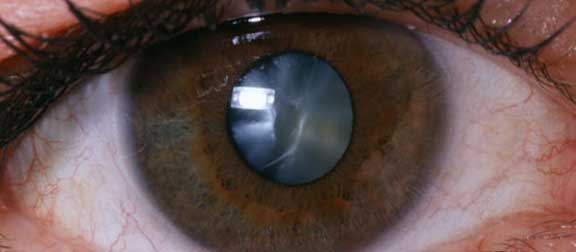What is a Cataract? Imagine the eye is a camera: Your natural lens is like the lens inside the camera that can change its focus. As your natural lens ages, it looses it’s clarity and becomes cloudy, which we call a cataract. This change in your lens can cause decreased vision and glare.
How do I prevent them? There is no way to prevent cataracts from forming but there are ways to help slow their formation. I always advise my patients to quit smoking if they do, maintain good control of their blood pressure, reduce their alcohol intake if it is excessive, and wear sunglasses to protect the eyes from direct sunlight.
How do I know if I have them? The most common symptoms are decreased or blurred vision, glare and poor night vision. Other symptoms include double vision in one eye and color vision changes. If you are experiencing any of these changes, I recommend seeing an eye care professional.
When is the right time to have my cataracts removed? Eye surgeons have certain criteria for when a cataract is ready for surgery. When vision is decreased a significant degree which cannot be corrected with a change in glasses, and the patient’s activities are affected, the benefits of cataract surgery to their vision outweigh the risks of the surgery.
What does cataract surgery involve? For most patients, cataract surgery can be done in an outpatient surgery center. Patients receive light sedation so that they are comfortable but awake for the procedure. The cataract is broken up, removed from the eye, and replaced with a new lens.
What replacement lens is right for me? There are a lot of different lens options and finding the right one is an important conversation to have with your cataract surgeon. I always ask about my patient’s expectations for after surgery and what aspects of their vision are most important to them. Together we can decide on what lens will work the best for them.
Can cataracts come back? While cataracts can not come back, the support system that your replacement lens sits in can become cloudy over time. When this happens, it can change the vision and seem like the cataract has returned. A simple and quick laser procedure can fix the problem and clear up the vision.


